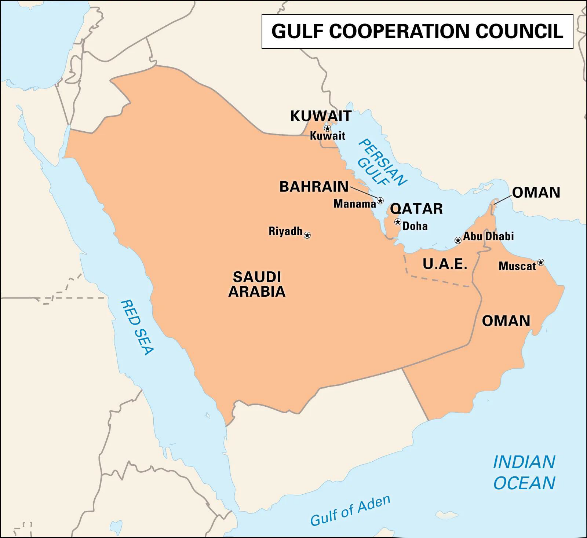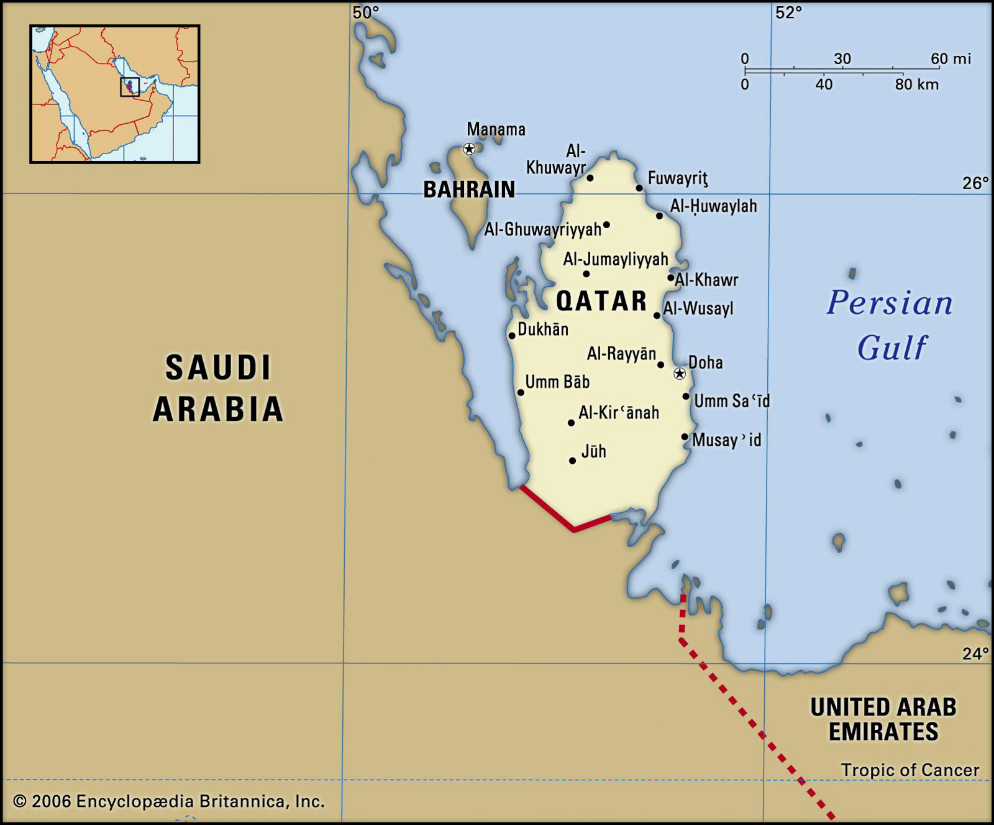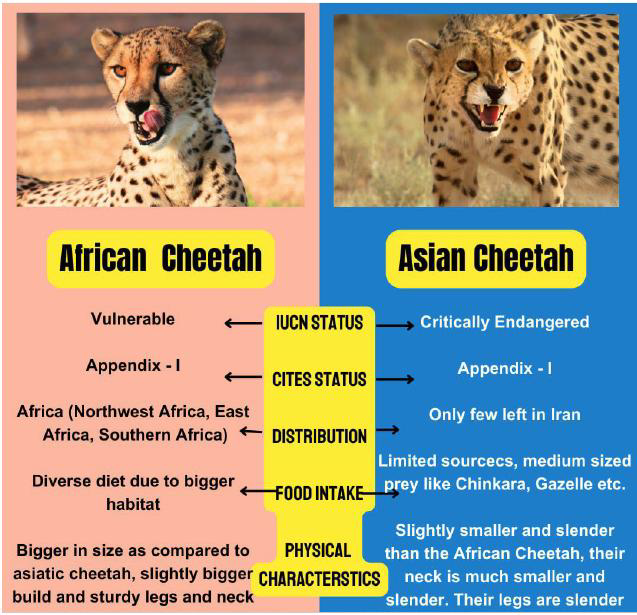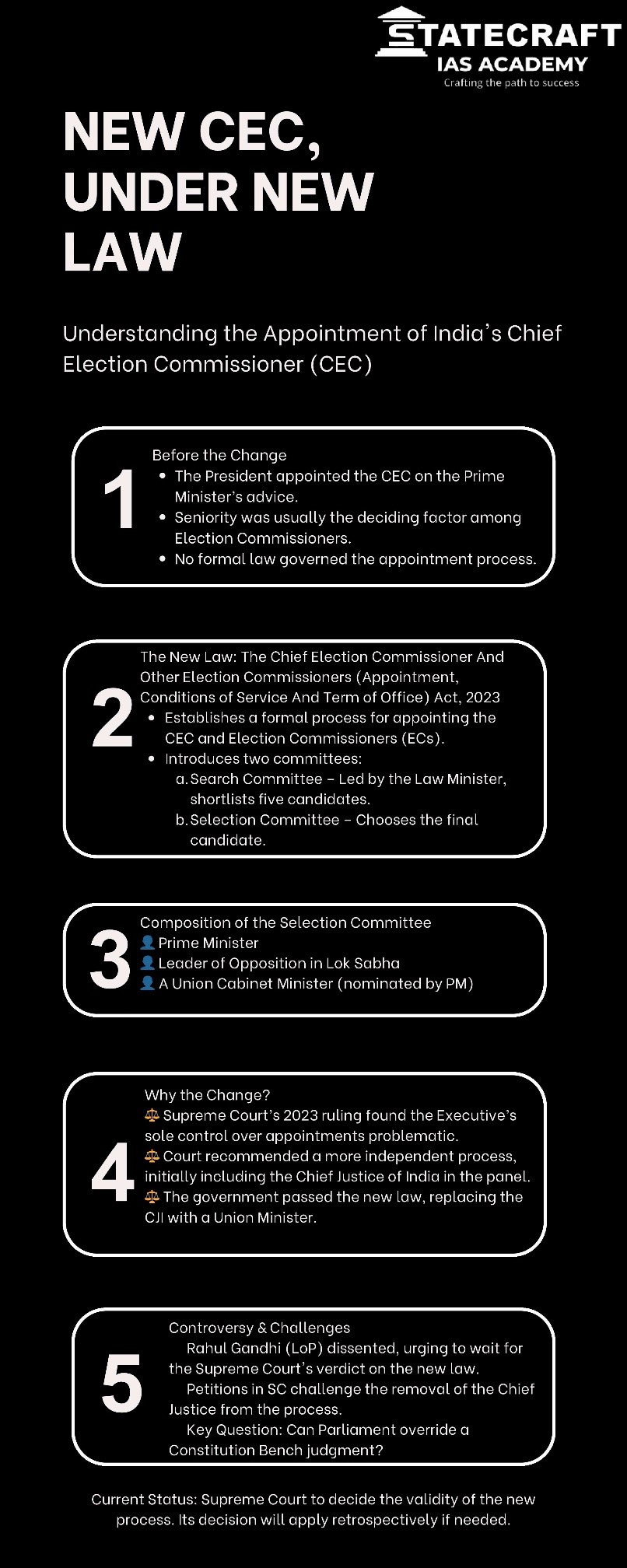Index:
- Eroding Federalism – Central Funding & NEP
- U.S.-Russia Talks on Ending the Ukraine War
- KIIT Row – Death of Nepalese Student & Eviction of Foreign Students
- Agricultural Protectionism & India's Import Tariffs
- India-Qatar Strategic Partnership
- Reciprocal Tariffs & US-India Trade Relations
- Myanmar, Manipur, and Strained Borders
- Concerns Over Translocation of African Cheetahs to India
- New CEC, Under New Law -Infographic
- SC’s Gag Order & Free Speech Debate -Infographic
1. Eroding Federalism – Central Funding & NEP
Context
- The Union Government withheld Tamil Nadu’s share of Samagra Shiksha funds for rejecting the National Education Policy (NEP) 2020.
- Tamil Nadu has long opposed the three-language formula, adhering instead to a two-language policy (Tamil & English).
- The issue raises concerns about cooperative federalism and State autonomy in education policy.
Key Issues
- Samagra Shiksha Scheme & Withholding of Funds
- Samagra Shiksha (since 2018-19) merged:
- Sarva Shiksha Abhiyan (SSA)
- Rashtriya Madhyamik Shiksha Abhiyan (RMSA)
- Teacher Education programmes
- Tamil Nadu has been denied ₹2,152 crore in funds, affecting 40 lakh students & 32,000 staff members.
- The Centre insists that funds will be released only if Tamil Nadu implements NEP in “letter and spirit”.
- Three-Language Formula & Tamil Nadu’s Opposition
- Tamil Nadu follows a two-language policy (Tamil & English) since 1968.
- Successive governments in Tamil Nadu have opposed the imposition of Hindi, citing cultural and linguistic autonomy.
- The Centre’s insistence on adopting Tamil, English, and a regional language has sparked resistance.
- Federalism & Constitutional Concerns
- Education is in the Concurrent List, requiring flexibility & cooperation between Centre and States.
- Tamil Nadu questions which constitutional provision mandates the three-language formula.
- Allegations that the Centre is using financial control to force States into compliance, undermining cooperative federalism.
Arguments & Implications
- Undermining Cooperative Federalism
- States are equal stakeholders in central schemes, and coercive policies foster resentment.
- A one-size-fits-all approach in education disregards regional diversity & autonomy.
- Linking Central Funds with NEP Implementation
- Risk: Setting a precedent where Centre controls States through financial allocations.
- Alternative Approach: Decoupling Samagra Shiksha from NEP and linking funds to performance indicators
- Policy Recommendations for Tamil Nadu
- Tamil Nadu should finalize its State Education Policy to present an alternative to NEP.
Strengthening education infrastructure & quality without relying solely on Central funding.
2. U.S.-Russia Talks on Ending the Ukraine War
Context
- Russia and the U.S. agreed to initiate talks aimed at ending the war in Ukraine and improving diplomatic and economic ties.
- The meeting took place in Riyadh, attended by S. Secretary of State Marco Rubio and Russian Foreign Minister Sergey Lavrov.
Key Objectives of the Talks
- Restoring embassy staffing in Washington and Moscow.
- Creating a high-level team to support Ukraine peace talks.
- Expanding diplomatic and economic cooperation between the U.S. and Russia.
Statements from Officials
- S. Secretary of State Marco Rubio emphasized that the talks were a starting point and more discussions would be needed.
- Russian Foreign Minister Lavrov called the talks “very useful” and stressed the need for regular consultations on Ukraine.
Ukraine’s Absence & Concerns
- No Ukrainian representatives attended the meeting.
- Ukrainian President Volodymyr Zelenskyy stated that Kyiv would not accept any outcome if it is not included in the negotiations.
- European allies expressed concerns about being sidelined in the discussions.
Geopolitical Implications
- The U.S. sees potential economic and geopolitical cooperation with Russia if the war ends in a way beneficial to global stability.
- Strategic realignment could impact global power structures, trade, and security alliances.
3. KIIT Row – Death of Nepalese Student & Eviction of Foreign Students
Context
- A third-year B.Tech student Prakriti Lamsal from Nepal was found dead at Kalinga Institute of Industrial Technology (KIIT), Bhubaneswar.
- The incident led to protests by Nepalese students, followed by their alleged forced eviction from the campus.
- Odisha government ordered a probe into the circumstances of the death and university’s actions.
Key Issues
- Death of the Student
- The student’s body was found in her hostel room under mysterious circumstances.
- Police registered two cases—one related to the girl’s death and another on the assault and harassment of foreign students by private security personnel and others.
- Eviction of Nepalese Students
- Over 500 students from Nepal were allegedly forced to leave KIIT and dropped at Cuttack railway station.
- This led to a widespread outcry and demands for action against KIIT authorities.
- Government Action
- Three-member probe committee was set up to investigate the death and university’s handling of the situation.
- Odisha Higher Education Minister Suryabanshi Suraj placed some university officials under suspension.
- KIIT was directed to facilitate the return of evicted students and provide counseling.
- Nepal Government’s Reaction
- Nepal’s Ministry of Education, Science, and Technology warned that it may stop issuing No-Objection Certificates (NOC) for Nepalese students to study in Odisha if the issue is not resolved fairly.
- Nepal’s diplomatic officials are engaging with Indian authorities for a just resolution.
Key Concerns & Implications
- Human Rights & Student Safety
- Allegations of assault on foreign students raise concerns about the safety of international students in Indian private universities.
- Due process was allegedly not followed in handling the student’s death or the eviction.
- Diplomatic & Bilateral Relations
- Nepal’s protest over the treatment of its students could strain India-Nepal educational ties.
- The issue could impact foreign student admissions in Indian institutions.
- Education & Institutional Autonomy
- Highlights concerns over accountability in private universities in India.
- Raises the need for better regulations on handling international students in private institutions.
4. Agricultural Protectionism & India's Import Tariffs
Context
- India’s import tariffs are five times higher than the U.S. and the highest among BRICS nations.
- The average import tariff in India (2023) was 17%, compared to 3.3% in the U.S.
- Protectionist policies in agriculture contribute to higher tariff rates.
Key Highlights
- India’s Import Tariff Trends
- India has the highest tariff rates among BRICS nations:
- India – 17%
- Brazil – 11%
- South Africa & China – 7%
- Russia – 6.6%
- EU – 3%
- The number of tariff lines (categories taxed) remains comparable to the U.S.
- Sector-wise Tariff Analysis
- Agriculture: Import tariffs remain very high (39%) to protect domestic farmers.
- Non-Agriculture: Tariffs have fallen to 13.5% but remain twice the U.S. level.
- Highest Tariff Sectors (2023):
- Beverages & tobacco (74.5%)
- Oils, fats (60.1%)
- Sugars & confectionery (51.5%)
- Dairy products (37.8%)
- Trade Relations & Impact on Exports
- India’s exports to the U.S. have increased, reaching 6% of total exports.
- Higher import tariffs discourage foreign investment and limit India’s global competitiveness.
- Donald Trump’s administration pressured India to lower tariffs, particularly on dairy and agricultural products.
Arguments For & Against High Import Tariffs
Arguments in Favor:
- Protects domestic industries & farmers.
- Encourages self-reliance (Atmanirbhar Bharat).
- Reduces dependency on foreign goods.
Arguments Against:
- Hinders global trade & competitiveness.
- Raises costs for consumers.
- Affects foreign investment & WTO compliance.
Way Forward
- Gradual Tariff Reduction for non-essential agricultural products.
- Bilateral Trade Agreements with the U.S. & EU to ease tariff barriers.
- Boost Domestic Production through technology & infrastructure rather than protectionism.
- Strengthen WTO Negotiations to balance self-sufficiency & trade liberalization.
5. India-Qatar Strategic Partnership
Key Highlights
- India and Qatar signed an agreement to elevate their relationship to a strategic partnership.
- The agreement aims to enhance cooperation in trade, investment, energy, and security.
- Both sides are exploring the possibility of a Bilateral Free Trade Agreement (FTA) between India and the Gulf Cooperation Council (GCC).
- A Double Taxation Avoidance Agreement (DTAA) was signed.
Context and Background
- Qatar is a major energy supplier to India.
- The meeting between Prime Minister Narendra Modi and Emir Sheikh Tamim Bin Hamad Al-Thani covered various regional and global issues, including the Israel-Palestine conflict.
India-GCC FTA
- Ongoing negotiations for an India-GCC Free Trade Agreement.
- India is considering a bilateral FTA with Qatar, separate from the larger GCC agreement.
Bilateral Trade Relations
- Total bilateral trade stands at $28 billion.
- 38 Qatari entities from sectors like retail, finance, and energy participated in discussions.
Security and Strategic Component
- The agreement includes a security component, though the timeline for implementation remains unclear.
Challenges
- The case of Purnendu Tiwary, an ex-Indian Navy commander, who remains in Qatari custody despite the release of seven other detainees from the same case.
Significance
- Strengthens India’s energy security and trade relations with the Gulf region.
- Expands India’s diplomatic and strategic footprint in West Asia.
- Potential economic benefits through trade agreements.
6. Reciprocal Tariffs & US-India Trade Relations
- Context and Background
- The U.S., under President Donald Trump, introduced reciprocal tariffs to address what it viewed as unfair trade practices.
- The policy aimed to ensure that if a country imposed high tariffs on American goods, the U.S. would impose equivalent tariffs on that country’s exports.
- India, as a key trade partner of the U.S., was specifically mentioned in Trump’s announcement.
- Key Features of the Reciprocal Tariff Policy
- Concept: If a foreign country imposes a tariff on U.S. goods, the U.S. will impose an equal tariff in return.
- Objective: To create a level playing field for American businesses and reduce trade imbalances.
- Implementation: The U.S. government would evaluate tariff rates of trading partners and adjust U.S. tariffs accordingly.
- U.S.-India Trade Relations and Tariff Issues
India’s Tariff Structure
- India has historically imposed high tariffs on certain U.S. imports, especially in sectors like automobiles and electronics.
- For instance, high tariffs on American motorcycles (such as Harley-Davidson) were a point of contention between Trump and Modi.
U.S. Response
- Trump argued that India’s high tariffs were unfair to U.S. businesses.
- The U.S. sought a reciprocal trade deal with India to reduce trade barriers.
- India, while engaging in negotiations, expressed concerns over potential economic disruptions.
- Political and Economic Implications
For the U.S.
- Strengthens Trump’s “America First” trade policy.
- May boost American manufacturing by reducing dependency on imports.
- However, could invite retaliatory tariffs from affected countries, harming American exporters.
For India
- Increased tariffs on Indian exports to the U.S. could hurt industries like textiles, pharmaceuticals, and IT services.
- May push India to seek alternative trade alliances or strengthen domestic manufacturing.
- Could affect diplomatic relations with the U.S., a key strategic partner.
For Global Trade
- Signals a shift towards protectionism, moving away from free trade agreements.
- Other countries may adopt similar policies, leading to potential trade wars.
- Could slow down global economic growth by disrupting supply chains.
- Strategic Considerations for India
Short-Term Approach
- Negotiations: Engage in talks with the U.S. to secure trade exemptions or reduced tariffs.
- Diversification: Expand trade partnerships with other major economies like the EU and China.
Long-Term Strategy
- Self-Reliance (Aatmanirbhar Bharat): Strengthen domestic industries to reduce dependency on exports.
- Trade Agreements: Focus on bilateral and regional trade deals to reduce tariff risks.
WTO Involvement: Use international trade bodies to challenge unfair tariff policies.
7. Myanmar, Manipur, and Strained Borders
- Context and Background
- Northeast India has historically faced insurgency but has seen relative peace in recent years.
- The Myanmar military coup in February 2021 led to widespread unrest and armed resistance by the People’s Defence Forces (PDFs) and Ethnic Armed Organisations (EAOs).
- The instability in Myanmar has caused an influx of refugees into India, particularly in Manipur and Mizoram.
- Key Issues
- a) Refugee Influx and Border Security
- The India-Myanmar border (1,643 km) is porous, allowing free movement of people, particularly ethnic groups like the Mizo-Chin-Kuki.
- Many refugees from Myanmar, especially from Chin, Kachin, and Sagaing regions, have entered Mizoram and Manipur.
- This has led to diverse reactions:
- Mizoram: Displays empathy towards refugees due to shared ethnic ties.
- Manipur: Faces ethnic tensions, as many refugees belong to groups involved in local conflicts.
- b) Border Trade and Economic Challenges
- The border areas, particularly Moreh in Manipur, were once bustling trade centers. However, the violence and border restrictions have disrupted trade.
- The India-Myanmar-Thailand trilateral highway project has also been affected, delaying India’s plans to enhance connectivity to Southeast Asia.
- c) Security Concerns
- The crisis in Myanmar has strengthened criminal networks, including drug trafficking and arms smuggling, affecting Northeast India’s security.
- Armed groups on both sides of the border are using the conflict to expand their influence.
- The Government of India has attempted to control refugee movement by reducing the Free Movement Regime (FMR) from 16 km to 1 km.
- Diplomatic and Strategic Concerns
- India officially communicated to Myanmar about its withdrawal from the Land Border Crossing Agreement, restricting people’s movement.
- China’s Role:
- China is also witnessing refugee spillover.
- It has a strong strategic and economic relationship with Myanmar.
- China’s engagement in Myanmar affects India’s regional influence.
- Policy Recommendations and Way Forward
Short-Term Measures
- Humanitarian Aid: Provide basic healthcare, education, and relief to refugees.
- Security Management: Strengthen border control while ensuring a humanitarian approach.
- Diplomatic Engagement: Collaborate with Myanmar’s stakeholders to stabilize the region.
Long-Term Solutions
- Economic Development: Invest in border trade infrastructure to create economic opportunities.
8. Concerns Over Translocation of African Cheetahs to India
- Context and Background
- Project Cheetah aims to introduce African cheetahs (Acinonyx jubatus) into India to revive the extinct species in the region.
- Under this project, 20 cheetahs (8 from Namibia in September 2022 and 12 from South Africa in February 2023) were relocated to Kuno National Park (KNP), Madhya Pradesh.
- The initiative has been met with criticism regarding ecological, ethical, and welfare challenges.
- Key Concerns Raised by the Centre for Wildlife Studies (CWS)
- a) High Mortality Rate and Health Issues
- 40%-50% mortality rate in the first phase, much lower than the expected 85% survival rate.
- Cheetahs are experiencing high levels of stress, requiring over 90 chemical immobilisations and frequent veterinary interventions.
- This raises concerns about their physical and mental health.
- b) Ethical and Sustainability Challenges
- Cheetah populations in Africa are already under stress, with only around 6,500 mature individuals left in the wild.
- The project relies on a continuous supply of cheetahs from Africa, which is neither ecologically sustainable nor ethical.
- Keeping all imported cheetahs in captivity before release further adds to their distress.
- c) Ignoring Local Ecological Factors
- Kuno National Park may not be an ideal habitat due to factors such as prey base, climatic differences, and competition from other predators.
- The project does not sufficiently account for the ecological interactions within the Indian environment.
- Policy Recommendations and Way Forward
- a) Inclusive Conservation Approach
- Conservation decisions should be more participatory, involving local communities, ecologists, and wildlife experts.
- Understanding the perceptions of local people and their interactions with wildlife is crucial for long-term success.
- b) Focus on Shared Spaces and Coexistence
- Instead of forcing artificial conservation efforts, policies should promote coexistence between humans and wildlife.
A more holistic conservation strategy should be developed to restore natural ecosystems and protect existing species.







